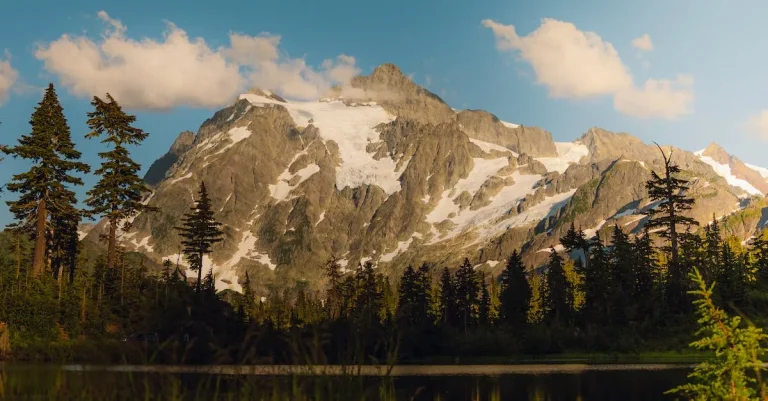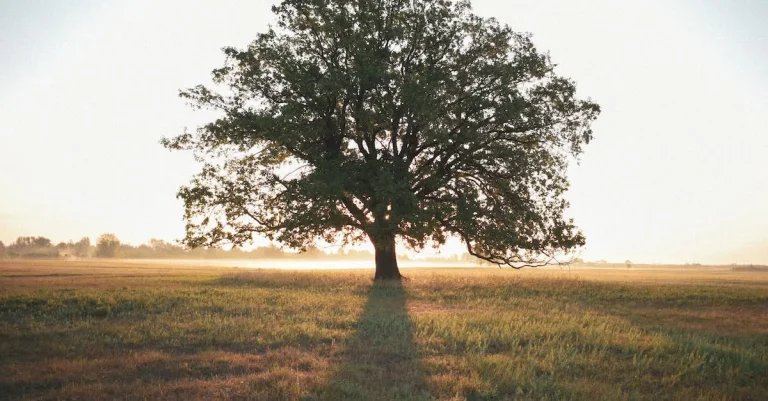Why Is Texas So Big?
Everything seems larger in Texas, especially the massive amount of land that makes it the second largest U.S. state by total area. But why is the Lone Star State so expansive compared to others? If you’re short on time, here’s a quick answer: Texas is so big mostly due to its history first as an independent republic, then through retaining control of its public lands during statehood negotiations.
This article will dive into the unique history behind Texas’ vast boundaries. We’ll highlight key events like the Texas Revolution, the Mexican-American War, negotiations around the Compromise of 1850, and Texas’ strong hold on public lands. You’ll also learn how Texas compares in size to other states and countries.
Texas as an Independent Republic
One of the main reasons why Texas is so big can be traced back to its history as an independent republic. Texas gained independence from Mexico in 1836, after a successful revolution led by the famous Battle of San Jacinto.
This victory allowed Texas to establish itself as a sovereign nation, with its own government, laws, and boundaries.
Revolting from Mexico
The decision to revolt from Mexico was driven by a variety of factors. Many Texans felt that the Mexican government was not respecting their rights and freedoms, leading to growing tensions between the two regions.
The Battle of the Alamo, where a small group of Texan defenders fought against a much larger Mexican army, became a symbol of resistance and fueled the desire for independence.
After the victory at the Battle of San Jacinto, Texas declared itself an independent republic and elected Sam Houston as its first president. This marked the beginning of a new era for Texas, as it embarked on a path towards self-governance and the establishment of its own unique identity.
Establishing Boundaries as a Republic
As an independent republic, Texas had to establish its own boundaries. Initially, the Republic of Texas claimed a vast territory that extended all the way to the Rio Grande in the west, encompassing parts of present-day New Mexico, Colorado, Kansas, and Oklahoma.
However, these boundaries were not recognized by Mexico, which still considered Texas as a rebellious province.
In 1845, Texas agreed to join the United States as a state, but this decision sparked a border dispute with Mexico. The Mexican-American War followed, resulting in the Treaty of Guadalupe Hidalgo in 1848.
Under this treaty, Mexico recognized the Rio Grande as the southern boundary of Texas, solidifying its size as we know it today.
It is worth noting that the size of Texas has also been influenced by subsequent land acquisitions, such as the Gadsden Purchase in 1853, which added even more land to the state’s already sizable territory.
For more information on the history of Texas as an independent republic, you can visit https://www.tsl.texas.gov/treasures/republic/.
Texas Joins the United States
One of the key reasons why Texas is so big today is because it joined the United States. The process of Texas becoming a state involved several annexation agreements and a significant event known as the Compromise of 1850.
Annexation Agreements with U.S.
In the early 19th century, Texas was an independent republic after gaining independence from Mexico in 1836. However, Texas desired to become a part of the United States due to various reasons, including economic benefits, protection from neighboring conflicts, and the desire for self-governance within a larger nation.
In 1845, Texas signed an annexation agreement with the United States, which was then approved by the U.S. Congress. This agreement allowed Texas to become the 28th state of the United States on December 29, 1845.
As a result, Texas’ territory expanded significantly, contributing to its large size today.
The Compromise of 1850
The Compromise of 1850 played a vital role in shaping Texas’ borders and solidifying its size. This compromise was a series of legislative measures aimed at resolving the tensions between free and slave states in the United States.
As part of this compromise, Texas agreed to relinquish its claims to vast territories in present-day New Mexico, Colorado, Wyoming, Kansas, and Oklahoma. In return, the federal government assumed Texas’ public debt and provided financial compensation.
This compromise not only resolved border disputes but also allowed the United States to define Texas’ boundaries more clearly, contributing to its large size. It also paved the way for further westward expansion and the growth of other states.
For more information on the history of Texas’ annexation and the Compromise of 1850, you can visit the following reputable sources:
How Texas Retained Public Lands
One of the reasons why Texas is so big is because it has managed to retain a significant amount of public lands. These lands, which are owned and managed by the state government, have played a crucial role in shaping the size and geography of Texas.
Texas Claims Lands During Statehood
During the process of becoming a state, Texas claimed vast amounts of land, including areas that were previously part of Mexico. This land acquisition greatly contributed to the size of Texas. The state was able to retain these lands and incorporate them into its territory, leading to the expansion of its boundaries.
In fact, Texas is unique among the states in the United States because it is the only one that has the legal right to secede into five separate states. This provision, known as the “Five States in One” provision, was part of the agreement made when Texas joined the Union in 1845.
By retaining ownership of these lands, Texas has been able to control its own destiny and manage its resources in a way that is beneficial to the state and its residents.
Railroads and Western Expansion
Another factor that contributed to Texas’ retention of public lands was the construction of railroads in the late 19th century. As railroads expanded across the country, Texas became a key hub for transportation and trade.
This led to an increase in population and economic growth, which further solidified Texas’ claim to its public lands.
The availability of vast tracts of public lands in Texas also attracted settlers and entrepreneurs who saw great potential for growth and prosperity. These lands were used for various purposes, including agriculture, ranching, and oil exploration.
The revenue generated from these activities helped fuel the state’s economy and contributed to its overall growth.
Today, Texas continues to maintain a significant amount of public lands, which are managed by various state agencies such as the Texas General Land Office and the Texas Parks and Wildlife Department. These lands not only provide valuable resources but also offer recreational opportunities for residents and visitors alike.
For more information on Texas’ public lands and their management, you can visit the Texas General Land Office website or the Texas Parks and Wildlife Department website.
Comparing Texas Size to Other States
Texas vs. Alaska
When it comes to size, Texas and Alaska are often in a league of their own. Texas is known for its vast expanse of land, but Alaska is even bigger. With an area of approximately 663,267 square miles, Alaska is the largest state in the United States.
To put it into perspective, Texas is about 268,820 square miles, making it the second-largest state in the country. So, while Texas may be big, Alaska takes the crown for being the largest.
Texas vs. California
While Texas may not be the largest state, it still holds its own when compared to California. Both states are known for their size and population, but how do they measure up? In terms of land area, Texas is larger than California.
However, when it comes to population, California takes the lead with over 39 million residents, while Texas has a population of over 29 million. So, while Texas may have more land, California has a larger population.
Texas vs. Montana
When comparing Texas to Montana, it’s clear that Texas is the winner in terms of size. Texas is about 10 times larger than Montana in terms of land area. Texas covers approximately 268,820 square miles, while Montana covers about 147,040 square miles.
This means that you could fit about 1.8 Montanas within the borders of Texas. So, if you’re looking for wide-open spaces, Texas is the place to be.
Texas Size Compared to Countries
Texas vs. France
When it comes to size, Texas is often compared to countries, and one such country is France. Texas is indeed bigger than France, both in terms of land area and population. With an area of approximately 268,581 square miles, Texas is about three times larger than France, which has an area of around 83,570 square miles.
This makes Texas the second largest state in the United States, after Alaska.
Texas vs. Germany
Another country that Texas is often compared to is Germany. While Germany is known for its economic prowess and technological advancements, Texas surpasses it in terms of land area. With a land area of 268,581 square miles, Texas is more than twice the size of Germany, which has a land area of approximately 137,847 square miles.
This means that you could fit more than two Germanys within the borders of Texas!
Texas vs. Japan
Japan, a country renowned for its technological innovation and rich culture, is also no match for the sheer size of Texas. Texas is significantly larger than Japan, both in terms of land area and population.
While Japan has a land area of approximately 145,925 square miles, Texas is almost twice as big with its 268,581 square miles. In terms of population, Texas also surpasses Japan, with over 29 million residents compared to Japan’s 126 million.
For more detailed information about the size of Texas compared to other countries, you can visit The World Factbook, a publication by the Central Intelligence Agency (CIA) that provides comprehensive and up-to-date information about countries around the world.
Conclusion
In summary, Texas owes its expansive boundaries to a unique history. As an independent republic, it set wide borders, which were retained when it became a U.S. state through hard negotiations. Texas also benefited from controlling its public lands as western expansion occurred.
While Alaska claims the title of largest state today, Texas remains a global powerhouse whose economy ranks in the top ten worldwide if it were an independent country. The Lone Star State’s famous pride and attitude seem well justified by its sheer size and accomplishments.








